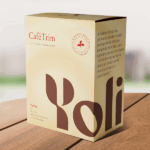Understanding What a Body Kit Is
A body kit is an aftermarket set of exterior modifications designed to enhance the appearance and, in some cases, the performance of a vehicle. Typically including elements such as front and rear bumpers, side skirts, splitters, spoilers, and diffusers, body kits are a popular choice among automotive enthusiasts who wish to personalise their cars. Unlike factory-fitted parts, which are designed with mass appeal and broad functionality in mind, aftermarket kits allow for greater creativity and individuality. They offer drivers the chance to transform a standard car into something distinctive, sporty, and unique.
Why Body Kits Are Popular Among Car Enthusiasts
Car enthusiasts often view their vehicles as an extension of their personality, and body kits provide a powerful means to express that individuality. They allow for styling that stands out in traffic, makes a statement at car shows, or simply reflects the owner’s vision. While some drivers focus on subtle modifications to preserve a sleek factory aesthetic, others go for bold, aggressive designs that significantly alter the car’s silhouette. Beyond style, body kits can also offer functional benefits, such as improving aerodynamics or reducing drag at higher speeds.
Different Types of Body Kits Available
The term ‘body kit’ covers a wide range of configurations. Full kits typically include redesigned front and rear bumpers, side skirts, and sometimes wide-arch fenders, while partial kits might feature only one or two of these components. Front splitters and canards, for example, are often sold individually to enhance the front-end appearance and airflow. Rear diffusers and boot spoilers are equally popular for balancing aesthetics with performance gains. Manufacturers such as Maxton Design UK have developed extensive product lines to suit a variety of makes and models, from hatchbacks and saloons to performance coupes and SUVs.
Material Choices for Body Kits Body kits are available in several materials, each offering its own balance of weight, strength, and cost. Fibreglass is widely used due to its affordability and ease of customization, though it can be brittle if not installed carefully. Polyurethane offers greater flexibility, making it more resistant to impacts, which is beneficial for daily-driven cars. ABS plastic is another popular choice, combining light weight with durability. High-end kits may use carbon fibre, prized for its strength-to-weight ratio and distinctive woven appearance, though it comes at a premium price. Selecting the right material often depends on the intended use of the vehicle, budget, and personal preference.
The Role of Aerodynamics in Body Kit Design
While body kits are often chosen for their visual impact, many are also engineered to improve a car’s aerodynamic efficiency. For instance, a front splitter can reduce front-end lift by directing airflow over and around the vehicle, enhancing stability at speed. Side skirts help to manage airflow along the sides of the car, reducing turbulence and drag. Rear diffusers accelerate airflow under the vehicle, creating a low-pressure zone that helps to increase rear downforce. When correctly designed and fitted, these elements can make a measurable difference to handling and fuel efficiency, especially at higher speeds.
Installation Considerations for Body Kits
Fitting a body kit is not simply a case of attaching new panels. Precision alignment is essential to achieve a professional look and ensure that aerodynamic components function as intended. Many kits arrive pre-primed, requiring painting to match the car’s colour. This process can be complex, particularly when working with materials like fibreglass, which may require sanding or adjustment for a perfect fit. Some enthusiasts choose to install their kits themselves, but professional fitting is highly recommended for best results. An experienced installer can ensure correct panel alignment, secure fixing, and an overall finish that enhances the car’s value and appeal.
Body Kits and Everyday Use
It is important to consider the practical implications of fitting a body kit, especially for vehicles used daily. Lower front splitters and extended side skirts can make navigating speed bumps and steep driveways more challenging. Materials like polyurethane or ABS plastic are generally better for everyday use, as they can withstand the occasional scrape without cracking. For those living in areas with uneven roads or harsh weather conditions, a more conservative kit design might be the wiser choice, balancing visual upgrades with everyday practicality.
The Evolution of Body Kit Styling
The popularity of body kits has evolved alongside automotive trends. In the 1980s and 1990s, exaggerated wide-body designs and sharp angles dominated the tuning scene. The early 2000s saw the rise of import tuner culture, with Japanese influence bringing sleeker, more aerodynamic designs. Today, there is a blend of styles, from aggressive track-inspired kits with functional aerodynamic components to understated OEM-plus modifications that enhance factory lines without overwhelming them. This diversity means there is a body kit style for nearly every taste and purpose.
Customization Beyond the Body Kit
A body kit often serves as the foundation for further vehicle customization. Many enthusiasts pair kits with upgraded alloy wheels, lowered suspension, performance exhaust systems, and custom lighting to create a cohesive, head-turning build. The synergy between these modifications can dramatically alter the car’s road presence, making it look and perform like a bespoke creation rather than a mass-produced model. By starting with a quality kit from a reputable manufacturer, car owners can ensure that future upgrades blend seamlessly with the overall design.
The Importance of Reputable Brands
When investing in a body kit, quality and fitment are critical factors. Poorly made kits can suffer from misalignment, uneven panel gaps, or low-quality materials that degrade quickly. Reputable brands such as Maxton Design Ltd have built their reputation on precision engineering, durable materials, and designs that complement a wide range of vehicles. Choosing a trusted manufacturer ensures that the parts fit as intended, require minimal modification during installation, and maintain their appearance over time.
Caring for Your Body Kit
Once installed, proper maintenance can help preserve both the appearance and performance benefits of a body kit. Painted surfaces should be washed and waxed regularly to protect against UV damage and road grime. Carbon fibre components may require specialised cleaning products to maintain their gloss and prevent yellowing. It is also wise to periodically inspect fixings and brackets to ensure components remain secure, especially after driving on rough roads or at high speeds. With the right care, a body kit can remain in top condition for many years.
Legal and Insurance Considerations
In the UK, most body kits are legal provided they do not create safety hazards or sharp edges. However, modifications that significantly alter a vehicle’s dimensions or aerodynamics should be reported to your insurer, as they can affect policy terms and premiums. Failing to disclose such changes could invalidate cover. For peace of mind, always check both local regulations and your insurance requirements before committing to a body kit installation.
Why Body Kits Are More Accessible Than Ever
Thanks to online retailers and global shipping, body kits are now more accessible to enthusiasts than ever before. Websites like Maxton Design UK provide detailed product listings, including specifications, compatibility information, and installation guidance. This makes it easy for car owners to find the right kit for their specific make and model without relying solely on local suppliers. The rise of e-commerce has also increased competition, resulting in a broader range of styles, materials, and price points to suit virtually every budget.
Conclusion: Enhancing Your Car’s Character
A body kit is more than just a cosmetic upgrade; it is a statement of personal style and, when designed well, a contributor to performance and aerodynamics. Whether you are aiming for a sleek, subtle enhancement or a full transformation that commands attention, there is a body kit to match your vision. By choosing quality components, ensuring professional installation, and maintaining the kit properly, you can enjoy the benefits of a refreshed and individualised vehicle for years to come. From hatchbacks to high-performance sports cars, body kits offer an exciting way to bridge the gap between standard and standout motoring.

















